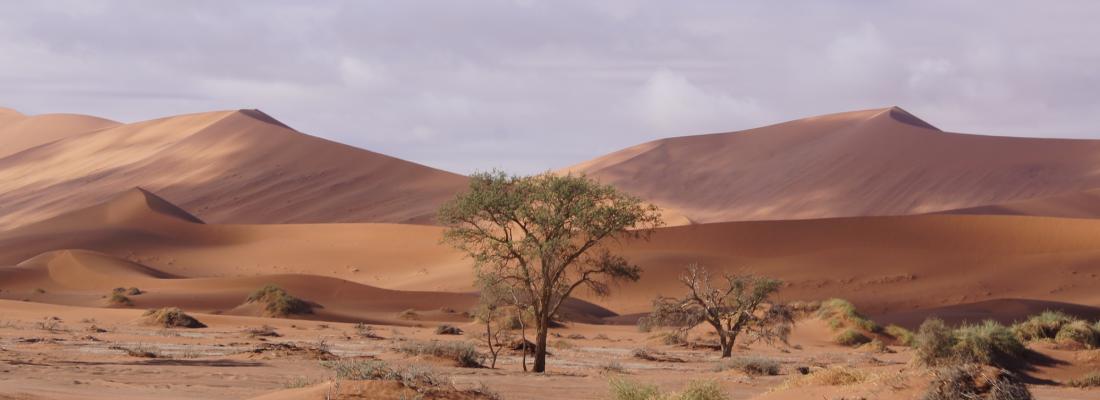Climate change and risks Reading time 3 min
Drylands: unexpected plant diversity enables adaptation to extreme climates
Published on 08 August 2024

The Earth is home to a diversity of plants with highly varied forms and functions. This extraordinary morphological, physiological and biochemical diversity determines how plants adapt and respond to ongoing global changes, with significant consequences for the functioning of ecosystems. Yet, 90% of current knowledge on the functional diversity of plants concerns only agricultural ecosystems and temperate zones. By contrast, drylands (see inset), making up 45% of the Earth’s terrestrial area, remain underrepresented in the data. These important zones are now directly threatened by increases in aridity, grazing pressure and desertification. We need to understand how plants respond to such pressures before we can establish the possible future evolution of these fragile ecosystems in terms of their biodiversity and functioning. To meet this urgent need, an international team of 120 scientists from 27 countries has carried out the first worldwide investigation of the functional diversity of plants in arid zones.
Having developed a standardised sampling protocol, the scientists collected and processed samples from the 301 plant species found across 326 representative plots from all continents (other than Antarctica) to characterise the functional diversity of the zones, generating a total of 1347 full sets of trait observations for analysis. Particular attention was paid to the characterisation of the plant elementome, that is, the diversity of chemical elements and trace elements (such as nitrogen, phosphorus, calcium, magnesium and zinc) found in plants, as these often-unrecorded traits exert a strong influence on how the latter function. Overall, the study involved more than 130 000 individual plant trait measurements.

A key hypothesis at the start of the study had been that aridity would reduce the diversity of plants through selection, leaving only those species capable of tolerating extreme water scarcity and heat stress. However, we found the opposite to be the case in the most arid rangelands of the planet, where plants instead exhibit a wide range of individual adaptation strategies. For example, some plants have developed high calcium levels, strengthening cell walls as a protection against desiccation. Others contain high concentrations of salt, reducing transpiration. Although fewer species are observed at local scale than in other regions of the planet (in temperate or tropical zones), plants in arid zones display an extraordinary diversity of forms, sizes and functioning, double that in more temperate climatic zones. This increase in trait diversity occurs abruptly at the point where rainfall volumes drop below the annual threshold of 400 mm. This is also the threshold for a pronounced decline in plant cover and the appearance of large areas of bare soil. To explain this phenomenon, the study’s authors suggest that the loss of plant cover leads to ‘plant loneliness syndrome’, where increased isolation and reduced competition for resources produces high degrees of trait uniqueness and functional diversity that are globally exceptional. This adaptive diversity could equally reflect complex evolutionary histories dating back to the initial colonisation of terrestrial habitats by plants more than 500 million years ago, when these habitats presented extreme conditions for living organisms.
This study reveals the importance of drylands as a global reservoir of functional diversity in plants. It provides a fresh lens through which to view plant architecture, the adaptation of plants to extreme habitats, historical plant colonisation of terrestrial environments, and the capacity of plants to respond to current global changes.
What is a dryland?
Drylands are defined by climatic zone where the scarcity of rainfall limits vegetation growth (i.e. with an aridity index of less than 0.65). They cover 45% of the earth's surface and are home to one third of the world's population. They include sub-humid, semi-arid, arid and hyper-arid ecosystems such as Mediterranean scrub, steppes, savannahs and deserts.
Reference
Gross N., T. Maestre F., Liancourt P. et al. (2024). Unforeseen plant phenotypic diversity in a dry and grazed world. Nature, DOI : https://doi.org/10.1038/s41586-024-07731-3
